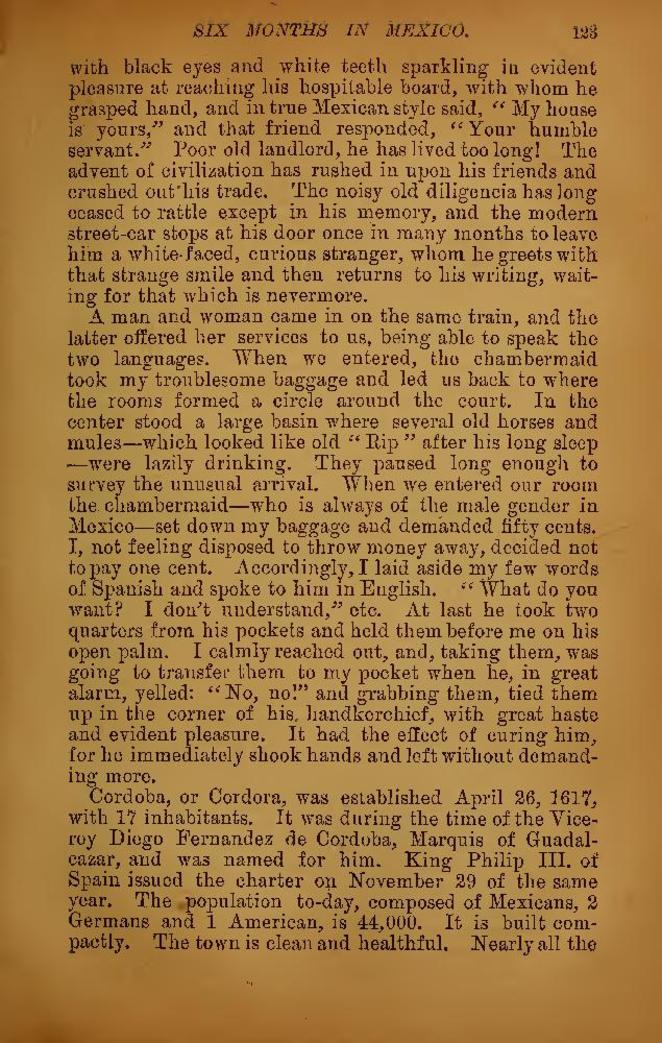with black eyes and white teeth sparkling in evident pleasure at reaching his hospitable board, with whom he grasped hand, and in true Mexican style said, "My house is yours," and that friend responded, "Your humble servant." Poor old landlord, he has lived too long! The advent of civilization has rushed in upon his friends and crushed out his trade. The noisy old diligencia has long ceased to rattle except in his memory, and the modern street-car stops at his door once in many months to leave him a white-faced, curious stranger, whom he greets with that strange smile and then returns to his writing, waiting for that which is nevermore.
A man and woman came in on the same train, and the latter offered her services to us, being able to speak the two languages. When we entered, the chambermaid took my troublesome baggage and led us back to where the rooms formed a circle around the court. In the center stood a large basin where several old horses and mules—which looked like old "Rip" after his long sleep—were lazily drinking. They paused long enough to survey the unusual arrival. When we entered our room the chambermaid—who is always of the male gender in Mexico—set down my baggage and demanded fifty cents. I, not feeling disposed to throw money away, decided not to pay one cent. Accordingly, I laid aside my few words ofof Spanish and spoke to him in English. "What do you want? I don't understand," etc. At last he took two quarters from his pockets and held them before me on his open palm. I calmly reached out, and, taking them, was going to transfer them to my pocket when he, in great alarm, yelled: "No, no!" and grabbing them, tied them up in the corner of his handkerchief, with great haste and evident pleasure. It had the effect of curing him, for he immediately shook hands and left without demanding more.
Cordoba, or Cordora, was established April 26, 1617, with 17 inhabitants. It was during the time of the Viceroy Diego Fernandez de Cordoba, Marquis of Guadalcazar, and was named for him. King Philip III. of Spain issued the charter on November 29 of the same year. The population to-day, composed of Mexicans, 2 Germans and 1 American, is 44,000. It is built compactly. The town is clean and healthful. Nearly all the
